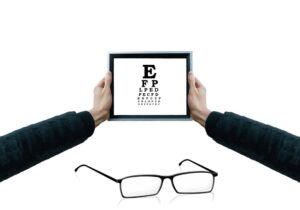
The U. S. Food and Drug Administration (FDA) is warning against the use of amniotic fluid eye drops even as the use of the substance is growing.
Testing Requirement Not Met
The FDA’s concern is that such eye drops have not passed through the agency’s federally mandated testing program. As a result, the effectiveness or hazards of the drops have not been determined.
“There are currently no FDA-approved amniotic fluid eyedrops to treat, mitigate or cure eye diseases or conditions, and in order for a health care practitioner to offer these products to patients, there must be an investigational new drug application (IND) in effect,” the FDA warning states. “In addition, as these products are not FDA-approved, the agency does not have information about their manufacture, and there are no assurances that the products are safe and effective for any disease or condition.”
Amniotic Fluid Market Growing
Even though eye drops have not yet obtained FDA approval, investment in amniotic-related products is rosy, according to a report from The Insight Partners.
The Amniotic Membrane Market Forecast contends that the products containing the material grow at a compound annual rate of 7.4 percent to 2028. That will make amniotic fluids a 2.80 billion industry in five years.
What is Amniotic Fluid
The Amniotic membrane or sac encases a fetus in the womb. It is composed of the amnion and chorion found in the inner layer of the placenta and is bathed in amniotic fluid. That contains cellular proteins as well as collagen and laminins.
Amniotic fluids are sometimes withdrawn from the womb in a procedure called amniocentesis to check the health of an unborn child. However, it is sometimes used in medical treatments.
A concoction containing amniotic fluids is sometimes used to treat joint problems. Because Amniotic fluids contain stem cells, it is used in other procedures. It is even used in eye surgery as a sort of bandage to promote healing. However, research results are conflicting.
Contradictory Results
In a 2009 report published in the Cambridge Ophthalmology Symposium, researchers noted, “the amniotic membrane remains a useful tool in the treatment of several ophthalmic conditions, especially those related to the ocular surface.” Although, the article went on to note that control trials had not substantiated the success of individual cases.
A 2019 study published by the National Institute of Health reported about half of the participants with dry eye disease showed improvement when amniotic fluid was mixed with artificial tears in their treatment.
However, a University of Utah study last month determined use of the fluids in eye drops was ineffective. The drops were used in the treatment of patients following laser eye surgery.
Companies Warned
The lack of conclusive trials or FDA approval did not stop two companies from promoting their amniotic eye drops.
As a result, the FDA sent warning letters to Regener-Eyes and M2 biologics. The letter noted both companies were selling amniotic fluid eye drops without agency approval.
Read More:
Come back to what you love! Dollardig.com is the most reliable cash-back site on the web. Just sign up, click, shop, and get full cashback!